Glacier & Waterton Lakes National Parks
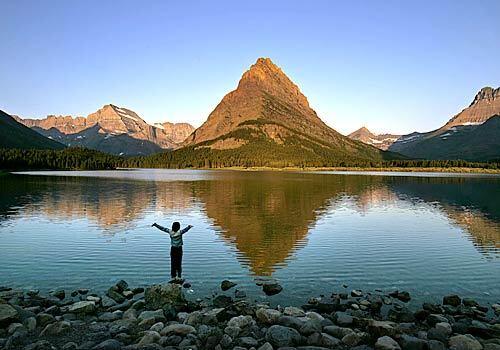
A young woman greets the dawn as it lights up mountains beyond Swiftcurrent Lake. Patches of white only hint at the region’s history: More than 20,000 years ago, an ice sheet covered this part of northwestern Montana so deeply that only the tallest mountains were visible. The pressure of the ice carved the horns, arêtes, cirques and hanging valleys for which Glacier is known. Toward the end of the 19th century, explorers documented more than 100 ice fields in the Glacier area, some covering nearly 1,000 acres. Today there are 27, and by 2030, scientists predict, all of the glaciers will be gone. (Allen J. Schaben / LAT)
Embraceable grandeur persists at the U.S. park and its Canadian cousin, though the ice is receding.
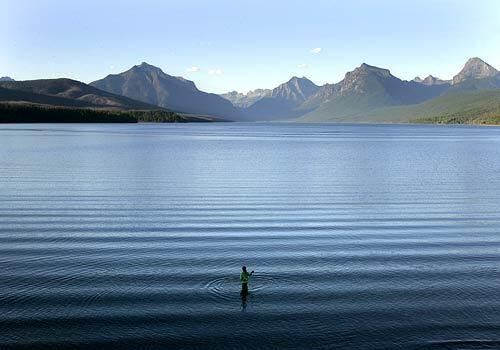
A swimmer ventures into Glacier National Park’s Lake McDonald, its surface ruffled by an unseen boat, near Apgar village, not far from the park’s west entrance. To visit Glacier is to find a glorious combination of the wild and the civilized, a place where the hand of man is surprisingly at home in a world teeming with predators and untrammeled nature. (Allen J. Schaben / LAT)
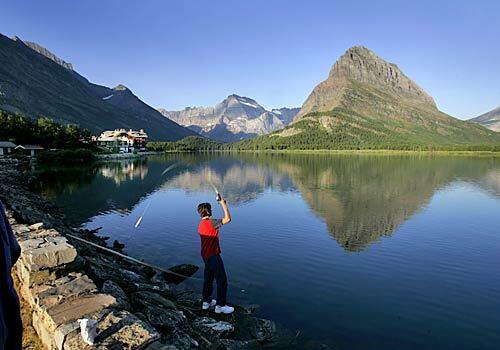
A youthful fisherman flings a line into Swiftcurrent Lake in the park’s eastern reaches. He may not hook a fish but he needn’t go hungry, for the rustically gracious Many Glacier Hotel is nearby. The proximity of lake and hotel illustrates Glacier’s means of satisfying both hardy outdoors enthusiasts and hearty appetites. (Allen J. Schaben / LAT)
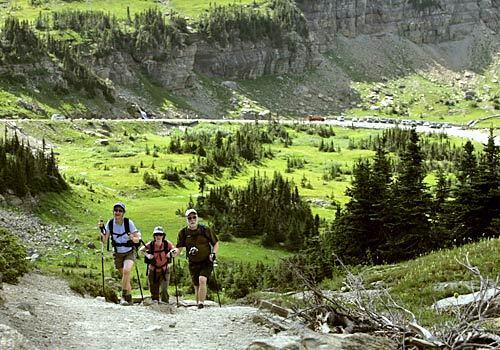
Hikers make the grade near Logan Pass. They won’t soon run out of traversable terrain, for Glacier features 700 miles of hiking trails. Stretching in the background is Going-to-the-Sun Road, a 50-mile engineering marvel that links east and west sides of the park. (Allen J. Schaben / LAT)
Advertisement
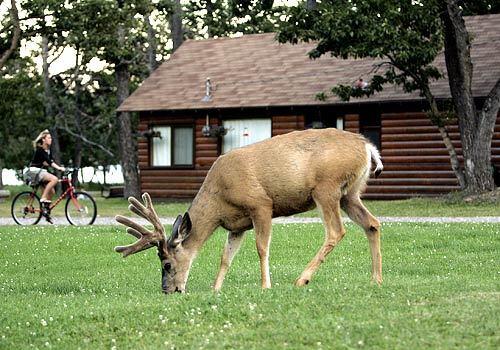
A grazing deer pays no heed to a bicyclist at the town of Waterton in Canada’s Waterton Lakes National Park. Straddling the Continental Divide, Glacier and Waterton Lakes share a 19-mile border. Seventy-five years ago, they were united to create the Glacier-Waterton International Peace Park. Originally meant to commemorate goodwill, the designation today allows for an easy exchange of science, study and resources. (Allen J. Schaben / LAT)
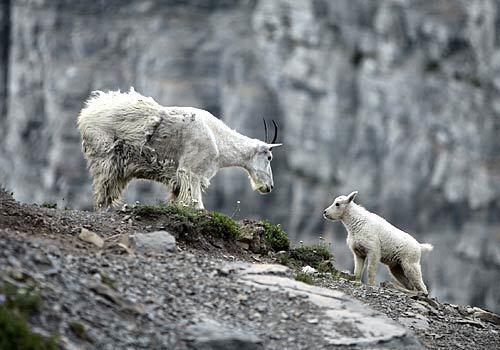
Back at Glacier, a mountain goat looks in on its child, in full view of travelers on Going-to-the-Sun Road. Less benign citizens of Glacier include grizzly bears. Indeed, it’s always best to make noise when hiking Glacier’s trails, to help keep unseen bears at bay. (Allen J. Schaben / LAT)
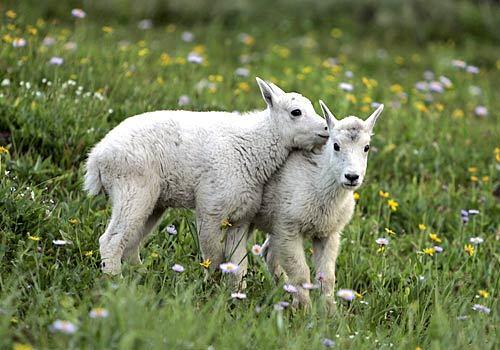
Baby mountain goats play at Glacier, whose vistas, with forests and wildflower-strewn meadows, are reminiscent of Switzerland’s. And the flora is diverse; on a ranger-led wildflower hike, a Times reporter quickly got lost trying to tell serviceberry from buffaloberry, pearly everlasting from harebells, false hellebore from potentilla. (Allen J. Schaben / LAT)
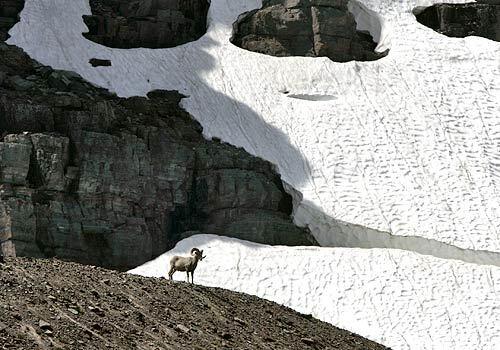
A bighorn sheep strikes a gallant pose, impressing hikers on a trail to Hidden Lake Overlook. (Allen J. Schaben / LAT)
Advertisement
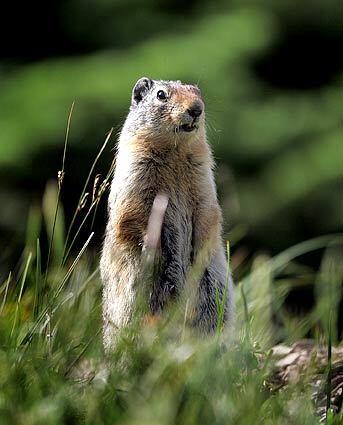
As people view Glacier’s wildlife, the wildlife is often looking back. Case in point: this attentive critter. (Allen J. Schaben / LAT)
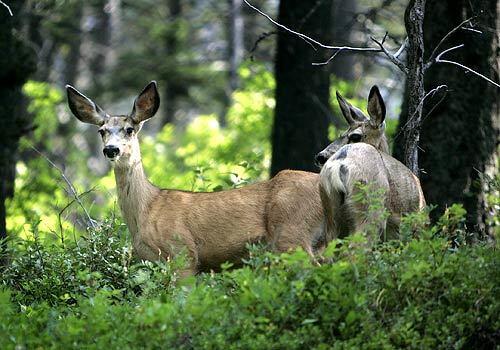
Deer are all ears as a photographer snaps their picture beside Swiftcurrent Lake near Many Glacier Hotel. (Allen J. Schaben / LAT)
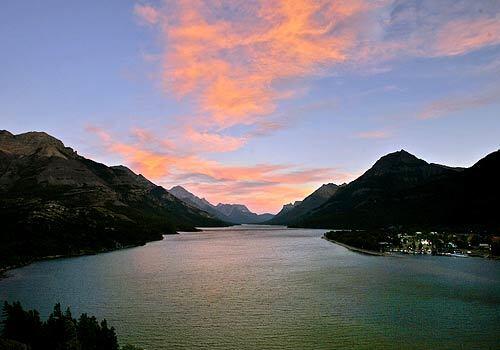
The sun sets on Waterton Lake and, at right, on the Prince of Wales Hotel. It might be a mere speck in this image, but even from a distance the hotel is conspicuous. Seven stories tall, with broad decks and rows of windows, it sits on a hill above Waterton township like a wayward ocean liner. (Allen J. Schaben / LAT)
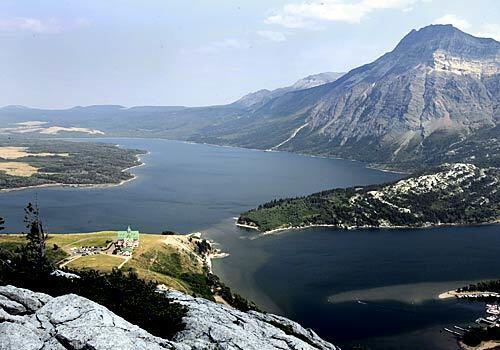
The Prince of Wales, bottom left, presents a view that by any measure is intoxicating. Speaking of which, some say that railroad executive Louis Hill built the hotel to circumvent Prohibition. During those dry years, Americans could take a boat across Waterton Lake, tipple at the hotel and return home the next day, slightly worse for wear. (Allen J. Schaben / LAT)
Advertisement
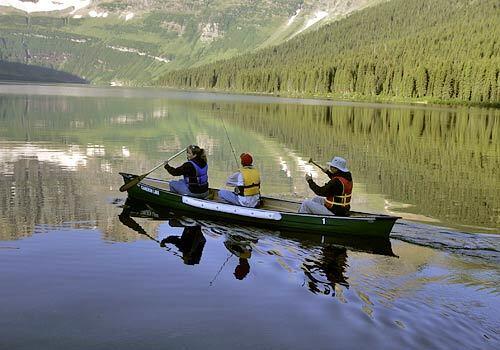
With the clear intent of snagging fish, canoeists skim across Cameron Lakes in Waterton Lakes park. Grizzlies often can be seen on the slopes of Cameron’s far side. (Allen J. Schaben / LAT)
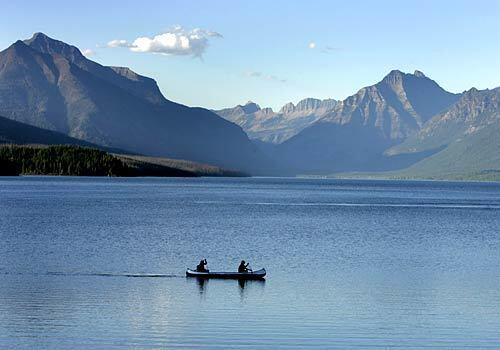
It’s a placid day for two canoeists on Glacier Park’s Lake McDonald. But along with rugged beauty and wildlife, storms also abound in the area. (Allen J. Schaben / LAT)
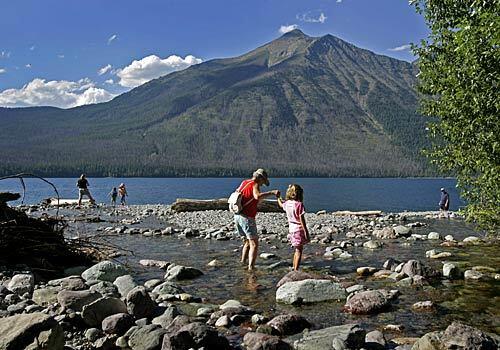
Wading in a stream that flows into Lake McDonald, vacationers can have a full experience of nature just outside three-story Lake McDonald Lodge, a smaller and more intimate hostelry than those on the east side of the park. (Allen J. Schaben / LAT)
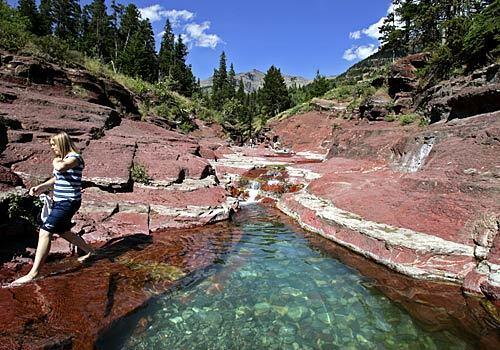
A visitor finds Red Rock Canyon’s crystal-clear water irresistible. The setting in Waterton Lakes park is rich with wildflowers and views of jagged peaks and meadows, whose colors complement those of the verdant trees and red rocks. (Allen J. Schaben / LAT)
Advertisement
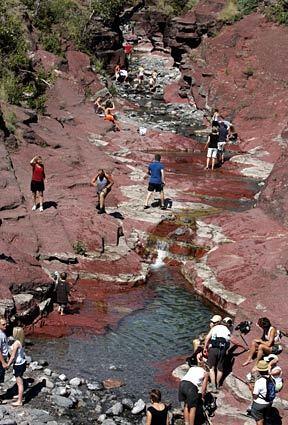
Beauty, if not privacy, is found near a pool in Red Rock Canyon, where self-guided tours offer insight into not only the geology of the area but also the history of native populations. (Allen J. Schaben / LAT)
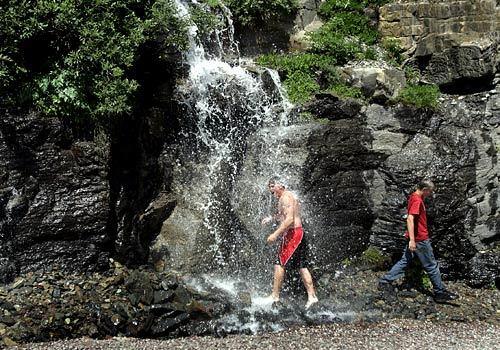
A visitor is cooled by water flowing over the Weeping Wall after pulling to the side of Going-to-the-Sun Road in Glacier park. (Allen J. Schaben / LAT)
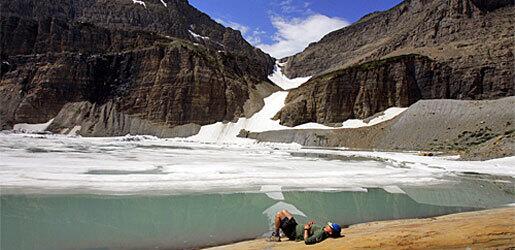
A hiker gathers himself at Grinnell Glacier, destination of a popular trek at Glacier park. A Times reporter who made what was described as a moderate climb to the glacier -- a 1,500-foot gain over six miles -- found Grinnell Valley spread out below. Steep mountains with jigsaw patches of snow near their peaks cradled turquoise lakes. (Allen J. Schaben / LAT)



